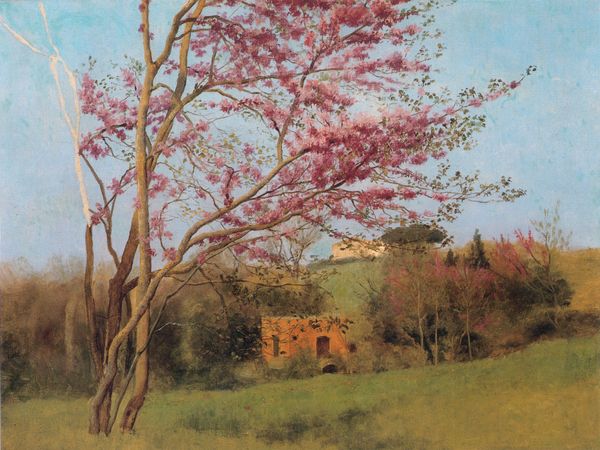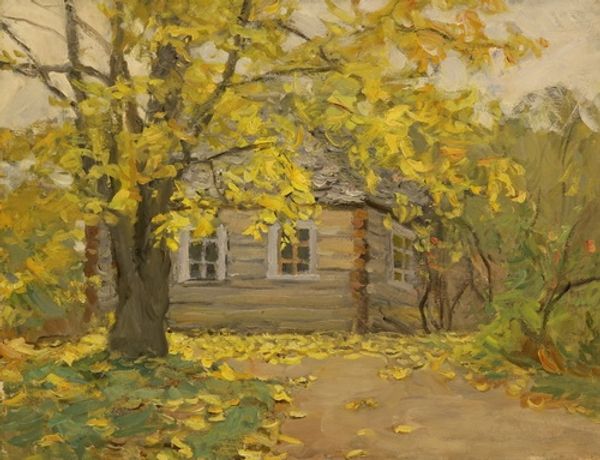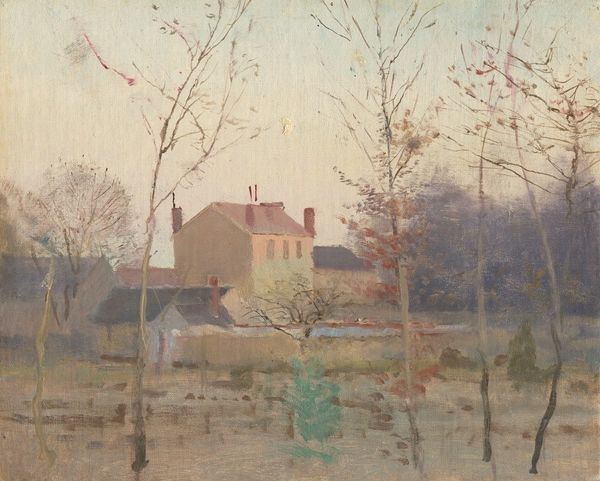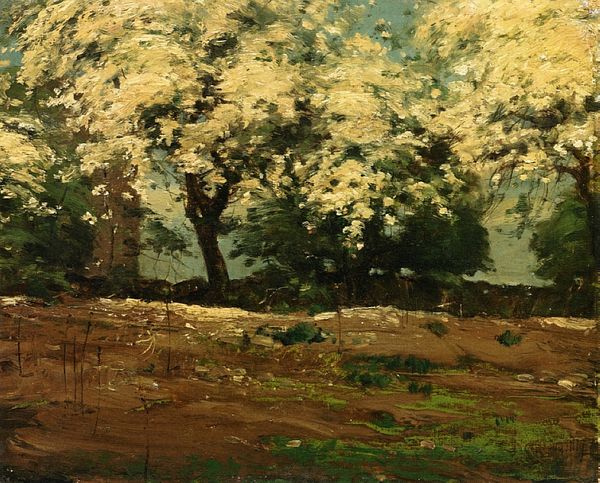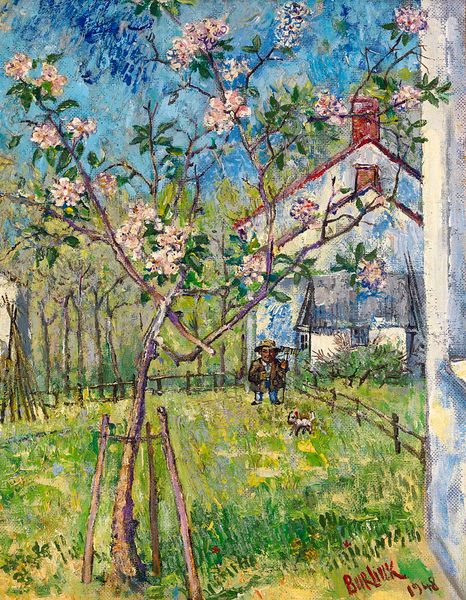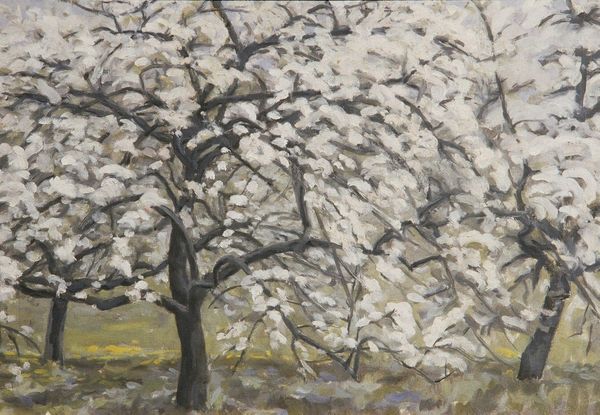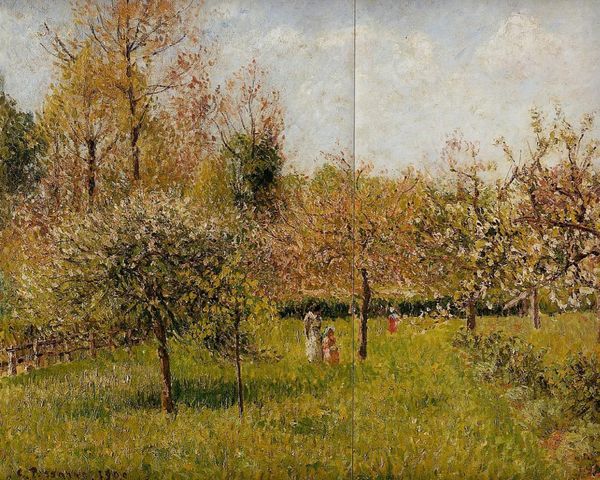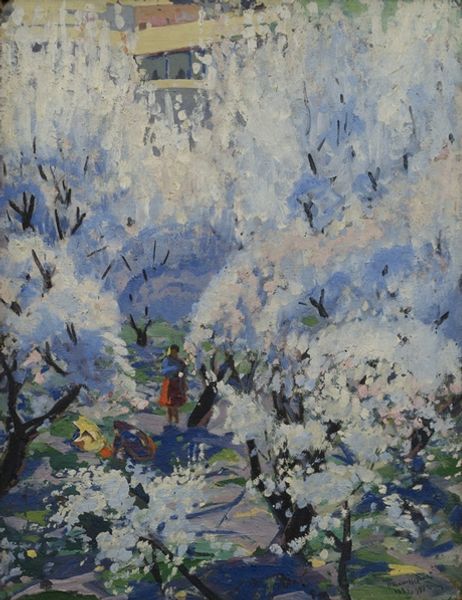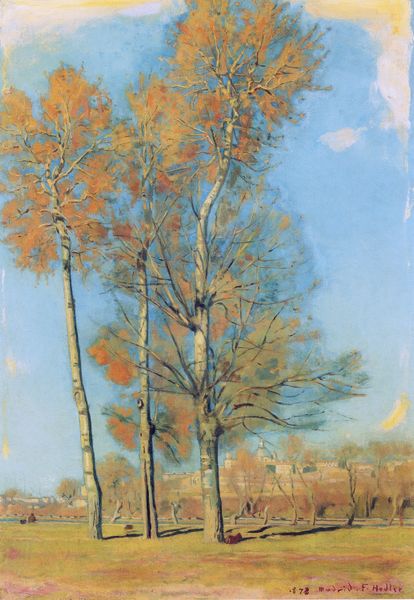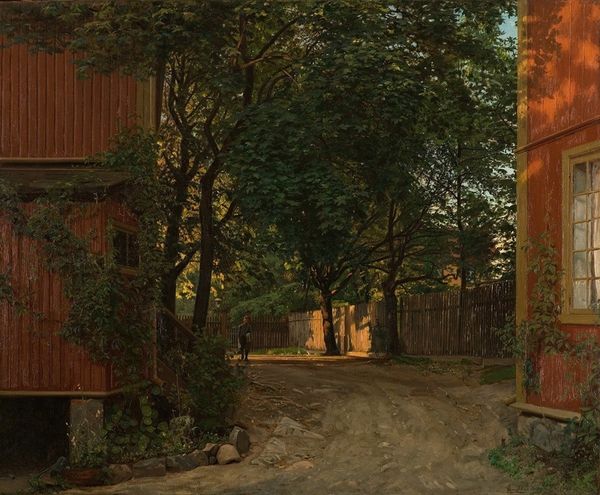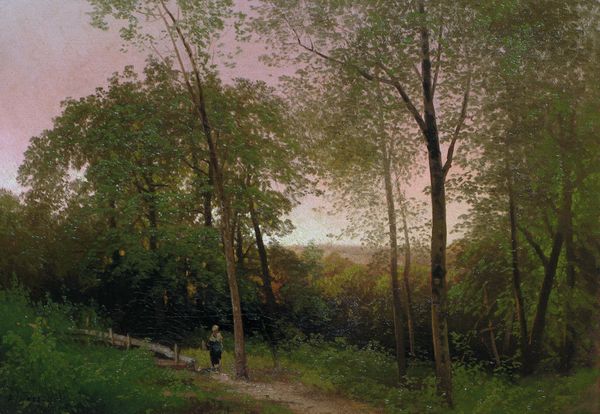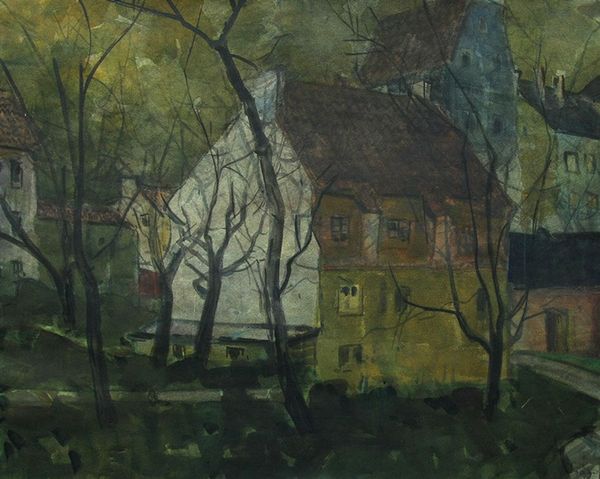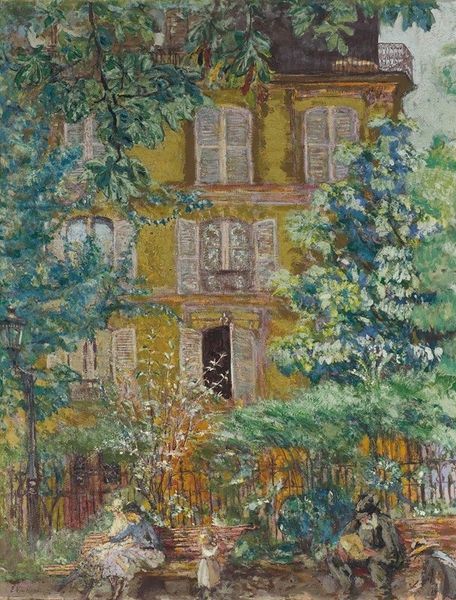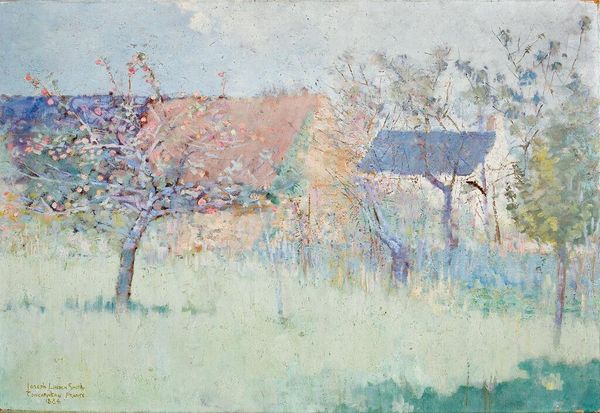
Copyright: Public Domain: Artvee
Editor: Here we have Amaldus Nielsen's "Naboer. Motiv fra ateliervinduet, Majorstuveien 8" from 1913, an oil on canvas work. It strikes me as a somewhat subdued scene, with bare trees dominating the view. What’s your take? Curator: Well, from a materialist perspective, I'm particularly interested in Nielsen's use of the 'plein-air' technique here. This wasn't just about representing nature, it was about engaging with a specific set of material conditions – light, atmosphere, even the portability of his equipment. Consider the labor involved in hauling those materials to Majorstuveien 8. How does the work then become about making? Editor: I hadn't thought of it that way. So you're saying the very act of painting outdoors, and the materials he used, are key to understanding the work itself? Curator: Precisely. It highlights the artist's direct engagement with the landscape, turning the entire process – from the mixing of pigments to the application on canvas, done en plein air – into a central aspect of the work. It removes that sense of the rarified, genius artist, isolated, and draws attention to the labor of creating art. Editor: That makes a lot of sense. Looking at it now, I see how the impressionistic style further emphasizes that immediate engagement with the environment and materials. It's not just a landscape, it’s a record of a specific moment in time, captured through paint. Curator: Exactly! Think also about the societal implications – the commodification of landscape, the growth of urban spaces versus rural ideals. The scene isn’t a wilderness; it's 'Naboer' or Neighbors. Who gets access to nature? What does that even mean when it's from an Atelier Window in a city? Editor: Wow, I am definitely looking at this in a whole new light. Thank you! Curator: My pleasure! Considering the social and material circumstances of a work always unlocks new avenues for understanding.
Comments
No comments
Be the first to comment and join the conversation on the ultimate creative platform.
